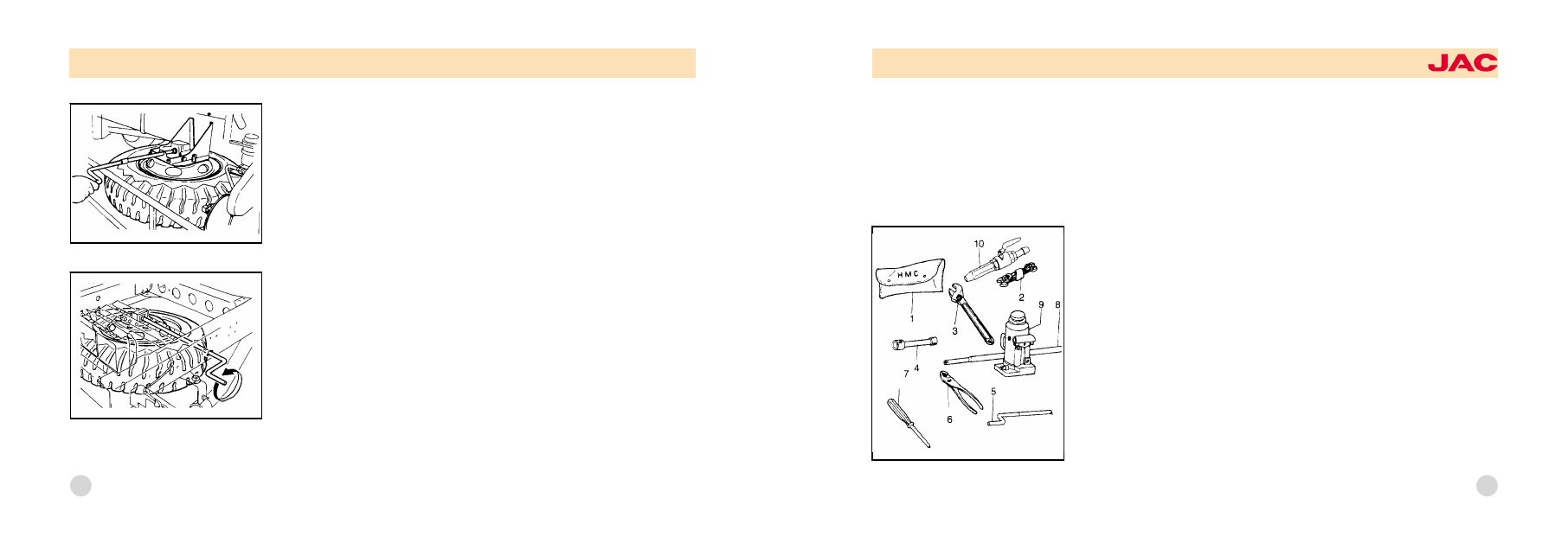Content .. 1216 1217 1218 1219 ..
Isuzu N-Series. Service manual - part 1218

119
CAUTION:
If the spare tire cannot be firmly secured, store the spare tire in the rear body
or cab and have inspection made at your nearest service shop.
TOOLS
1. Tool set case
2. Spanners
3. Angle wrench
4. Socket wrench
5. Spare tire handle
6. Plier
7. Screw driver
8. Jack handle
9. Hydraulic jack
NOTE:
Please drive after fixing jack with belt in the tool box.
118
SPARE TIRE
1. Insert the spare tire carrier handle, a vehicle-borne tool, into the hole in the
spare tire carrier and turn counterclockwise, and the tire will come down.
2. To install a tire, face the convex side of wheel upward, put the hanging
plate in the disc wheel, and rotate the spare tire carrier handle clockwise to lift
the tire.
NOTE:
While lifting the tire, check to ensure that the chain is not twisted and that the
hanging plate is not displaced.
3. Check to ensure that the tire has been firmly secured.
NOTE:
The spare tire should also be inflated to specifications and should be checked
for external damage and wear.
OWNER爷S MANUAL
JAC HEAVY DUTY TRUCK